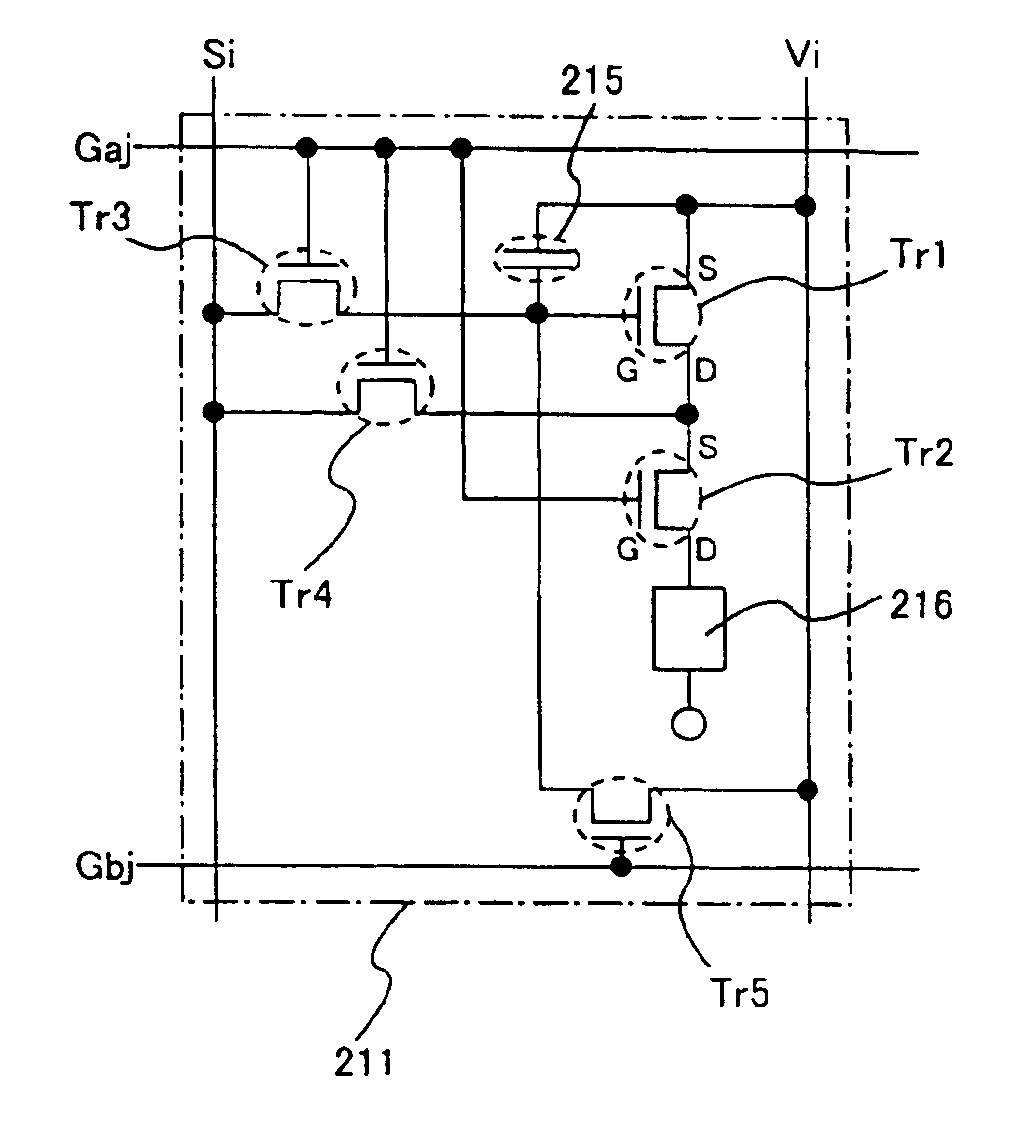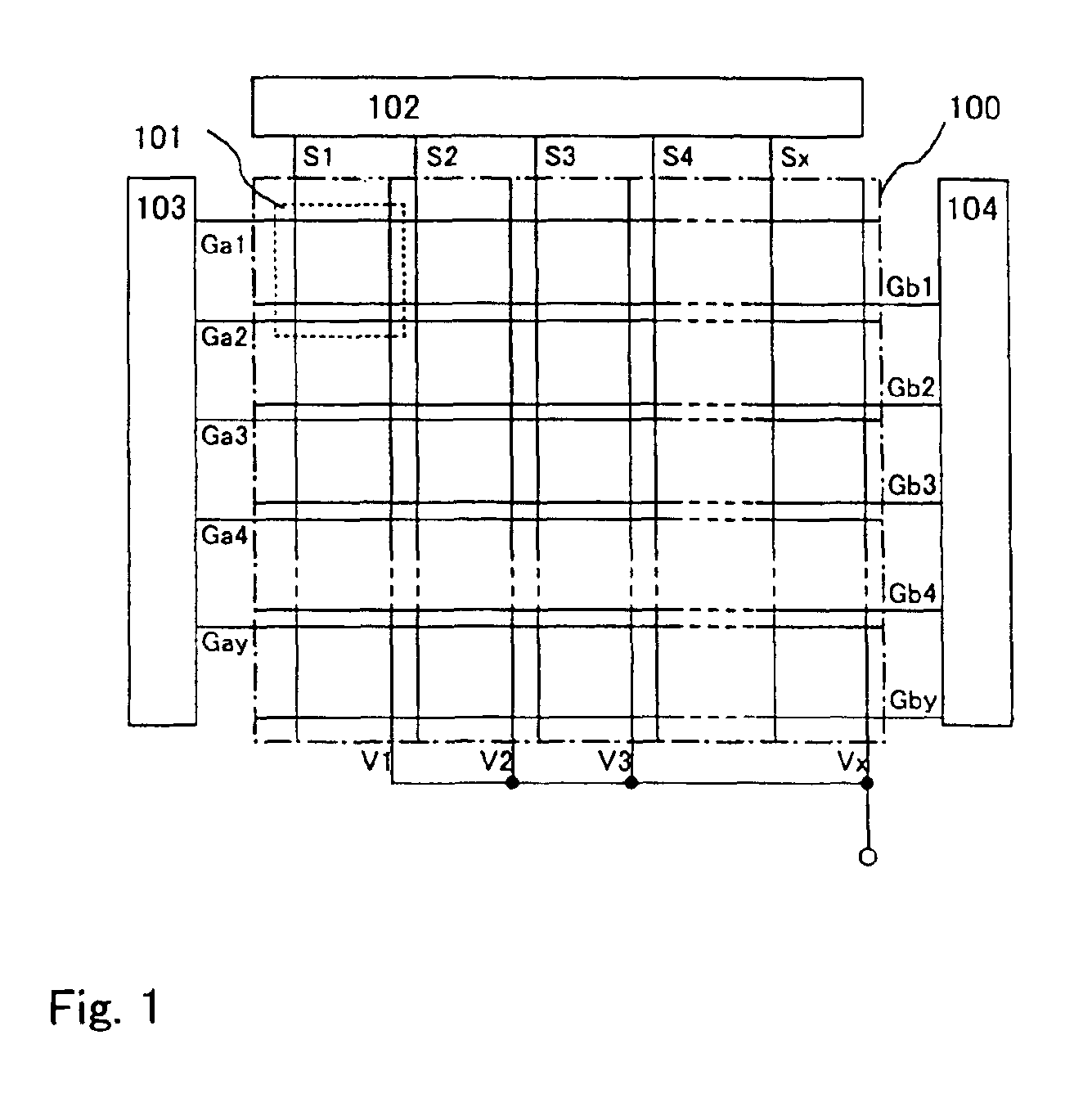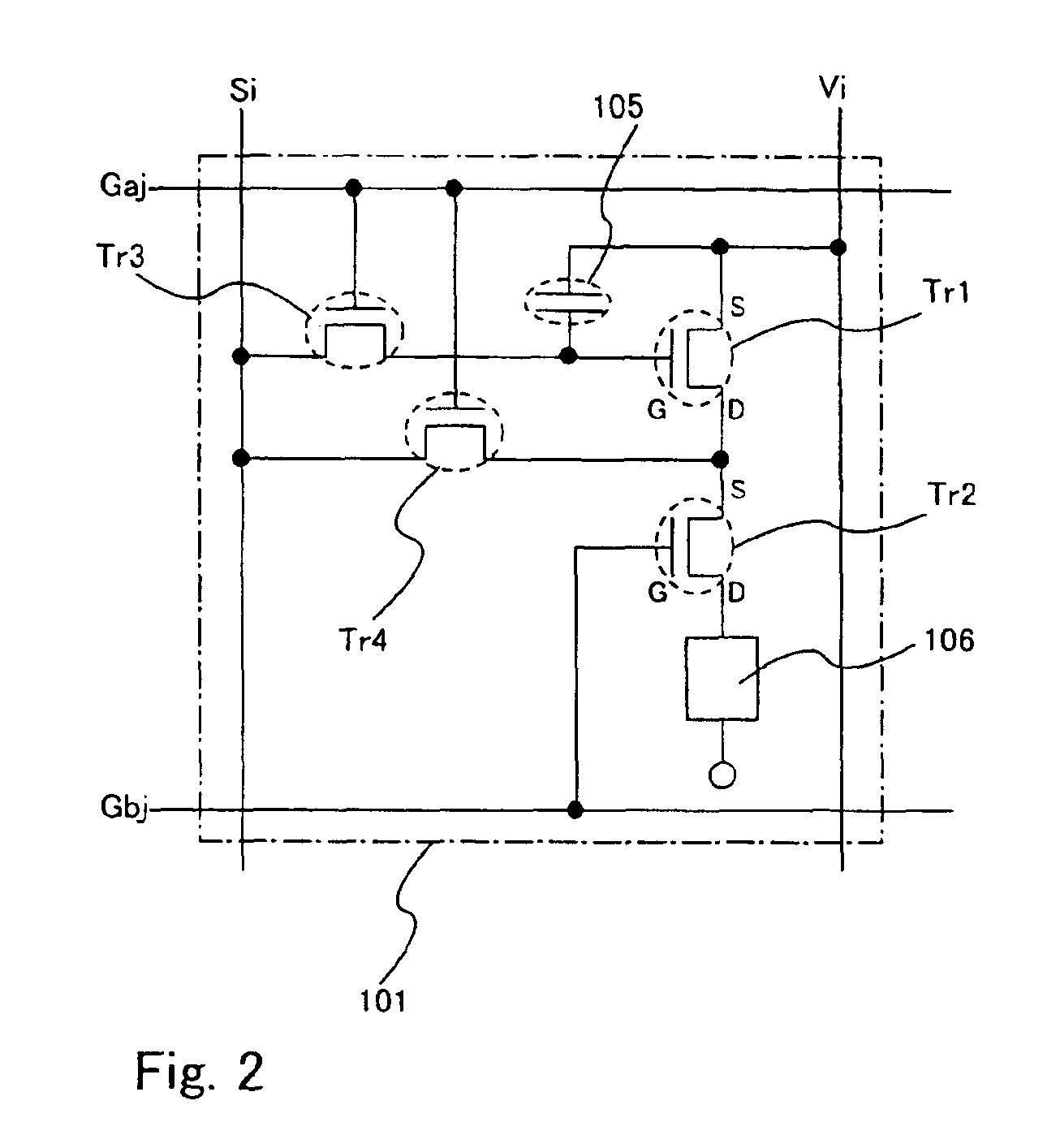Light emitting device, driving method for the same and electronic apparatus
a technology of light-emitting devices and electronic devices, applied in the field of oled panels, can solve the problems of oled organic light-emitting layers deteriorating at a different rate, oled brightness falling, and oled brightness lowering
- Summary
- Abstract
- Description
- Claims
- Application Information
AI Technical Summary
Benefits of technology
Problems solved by technology
Method used
Image
Examples
embodiment mode 1
[0052]FIG. 1 shows a block diagram of an OLED panel structure of the present invention. 100 is a pixel section forming a plurality of pixels 101 in a matrix form. Meanwhile, 102 is a signal line drive circuit, 103 is a first scanning line drive circuit and 104 is a second scanning line drive circuit.
[0053]In FIG. 1, although the signal line drive circuit 102, the first scanning line drive circuit 103 and the second scanning line drive circuit 104 are formed on the same substrate as the pixel section 100, the present invention is not limited to that structure. The signal line drive circuit 102, the first scanning line drive circuit 103 and the second scanning line drive circuit 104 may be formed on a different substrate from the pixel section 100 and connected to the pixel section 100 through an FPC or the like. Meanwhile, in FIG. 1, although the signal line drive circuit 102, the first scanning line drive circuit 103 and the second scanning line drive circuit 104 are provided one pe...
embodiment mode 2
[0067]Now, explanation will be made on the drive to the light-emitting device shown in FIG. 2, using FIG. 3. In the present embodiment mode, the operation of each pixel of the light-emitting device shown in FIG. 2 is explained by separating with a write period Ta and a display period Td.
[0068]In the write period Ta, the first scanning line Gaj is selected. When the first canning line Gaj is selected, the transistors Tr3 and Tr4 connected at their gate electrode to the first scanning line Gaj turn on. Note that, in the write period Ta, the second scanning line Gbj is not selected and hence the Tr2 is off.
[0069]On the basis of a potential of a video signal inputted to the signal line drive circuit 102, constant currents Ic flow respectively between the signal lines S1-Sx and the power lines V1-Vx. Note that, in the description, the current Ic is referred to as a signal current.
[0070]FIG. 3A shows a schematic diagram of the pixel 101 that, in the write period Ta, a constant current Ic ...
embodiment mode 3
[0091]This embodiment mode explains an embodiment mode different from Embodiment Mode 2 of driving the light-emitting device of FIG. 2, using FIG. 6. In this embodiment mode, the operation of each pixel of the light-emitting device of FIG. 2 will be explained by separating with a write period Ta, a display period Td and a non-display period Te. Note that, because the operation on the pixel in the write period Ta and display period Td has already been explained in Embodiment Mode 2, explanation will be herein made on the operation on the pixel in a non-display period Te.
[0092]The non-display period Te occurs after terminating a display period Td and before an occurrence of a display period Td. In the non-display period Td, the first scanning line Gaj and the second scanning line Gbj are not selected.
[0093]FIG. 6 shows a schematic diagram of the pixel in a non-display period Te. The transistor Tr3 and the transistor Tr4 are off. Meanwhile, the transistor Tr2 is also off. Accordingly, ...
PUM
 Login to View More
Login to View More Abstract
Description
Claims
Application Information
 Login to View More
Login to View More - R&D
- Intellectual Property
- Life Sciences
- Materials
- Tech Scout
- Unparalleled Data Quality
- Higher Quality Content
- 60% Fewer Hallucinations
Browse by: Latest US Patents, China's latest patents, Technical Efficacy Thesaurus, Application Domain, Technology Topic, Popular Technical Reports.
© 2025 PatSnap. All rights reserved.Legal|Privacy policy|Modern Slavery Act Transparency Statement|Sitemap|About US| Contact US: help@patsnap.com



